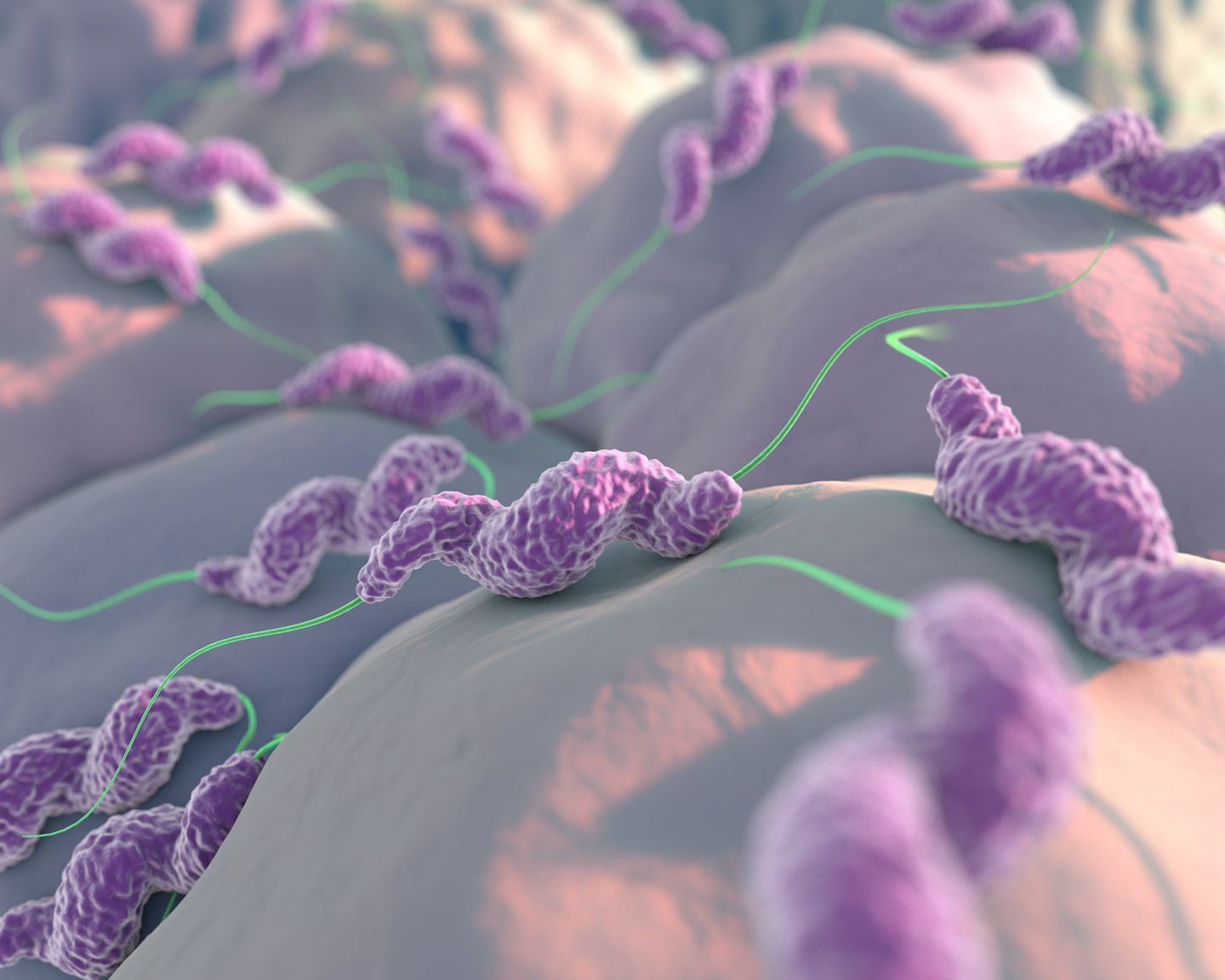
What is bacterial food poisoning? It's an illness caused by eating food contaminated with harmful bacteria. These tiny invaders can turn your favorite meal into a nightmare, leading to symptoms like vomiting, diarrhea, and stomach pain. Common culprits include Salmonella, E. coli, and Listeria. Each year, millions suffer from this preventable condition. While anyone can get sick, certain groups like infants, pregnant women, and older adults are more vulnerable. Understanding the causes, symptoms, and prevention strategies can help keep you and your loved ones safe. Let's dive into 20 essential facts about bacterial food poisoning to arm you with the knowledge you need.
What is Bacterial Food Poisoning?
Bacterial food poisoning, also known as foodborne illness, happens when harmful bacteria contaminate food or drinks. This contamination can lead to a range of symptoms, from mild discomfort to severe illness. Let's dive into some key facts about this common health issue.
-
Definition and Causes
Bacterial food poisoning is an infection or irritation of the digestive tract caused by bacteria, viruses, and parasites. Common culprits include Salmonella, E. coli, Staphylococcus aureus, Listeria monocytogenes, and Campylobacter jejuni. -
Prevalence
Each year, around 48 million people in the United States suffer from food poisoning, with about 3,000 deaths. Globally, the numbers are even higher, affecting millions annually.
Symptoms of Bacterial Food Poisoning
Symptoms can vary depending on the bacteria involved but often include several common signs.
-
Vomiting and Diarrhea
These are the most frequent symptoms, which can lead to dehydration if not managed properly. -
Abdominal Pain
Pain in the stomach or rectum can be severe and persistent, making it hard to carry out daily activities. -
Fever
A high fever, especially in children under two years old, is a significant symptom that shouldn't be ignored. -
Blood or Pus in Stool
In some cases, the stool may contain blood or pus, indicating a more severe infection. -
Nervous System Symptoms
Certain bacteria like Staphylococcus aureus and Listeria monocytogenes can cause neurological symptoms such as muscle weakness, tingling, and changes in thinking or behavior.
Who is at Risk?
Some groups are more susceptible to bacterial food poisoning due to their weakened immune systems or other health conditions.
-
Infants and Children
Young children are more likely to get food poisoning because their immune systems are still developing. -
Pregnant Women
Pregnant women are at higher risk due to their compromised immune systems and the potential for the bacteria to affect the fetus. -
Older Adults
Older adults may have weaker immune systems, making them more susceptible to severe symptoms. -
People with Weakened Immune Systems
Individuals with chronic illnesses, such as HIV/AIDS, or those undergoing chemotherapy are more likely to develop severe food poisoning.
Common Bacteria Responsible
Several types of bacteria are commonly associated with food poisoning.
-
Salmonella
Often found in poultry, eggs, and dairy products, Salmonella can cause symptoms within 6 hours to 6 days after consumption. -
Escherichia coli (E. coli)
This bacterium is known for causing severe kidney damage in children under five years old, particularly with the strain E. coli O157:H7. -
Staphylococcus aureus
This bacterium can cause symptoms within 30 minutes to 8 hours after eating contaminated food, often found in meat, egg salad, and cream-filled pastries. -
Listeria monocytogenes
This bacterium can cause symptoms within 9 to 48 hours and is commonly found in hot dogs, luncheon meats, unpasteurized milk, and soft cheeses from unpasteurized milk.
How Does Contamination Happen?
Food can become contaminated at various points from the farm to the table.
-
Growing and Harvesting
Bacteria can be present on fruits and vegetables during growing and harvesting. -
Processing
Improper handling and processing can lead to contamination. -
Storing
Inadequate storage conditions can allow bacteria to multiply. -
Shipping
Contaminated food can be transported to various locations, spreading the bacteria. -
Preparing
Handling food improperly during preparation is a common source of contamination.
Final Thoughts on Bacterial Food Poisoning
Bacterial food poisoning is a serious issue affecting millions globally each year. Understanding its causes, symptoms, and risk factors can help prevent it. Common culprits like Salmonella, E. coli, and Listeria can be found in everyday foods, making proper handling and cooking essential. Symptoms range from vomiting and diarrhea to severe complications like dehydration and kidney damage. High-risk groups include infants, pregnant women, older adults, and those with weakened immune systems. Prevention strategies like washing hands, cooking food thoroughly, and proper storage can significantly reduce risks. Reporting foodborne illnesses helps track and manage outbreaks. Ongoing research and community involvement are crucial in combating this issue. By staying informed and practicing good food safety habits, we can protect ourselves and others from the dangers of bacterial food poisoning.
Was this page helpful?
Our commitment to delivering trustworthy and engaging content is at the heart of what we do. Each fact on our site is contributed by real users like you, bringing a wealth of diverse insights and information. To ensure the highest standards of accuracy and reliability, our dedicated editors meticulously review each submission. This process guarantees that the facts we share are not only fascinating but also credible. Trust in our commitment to quality and authenticity as you explore and learn with us.


